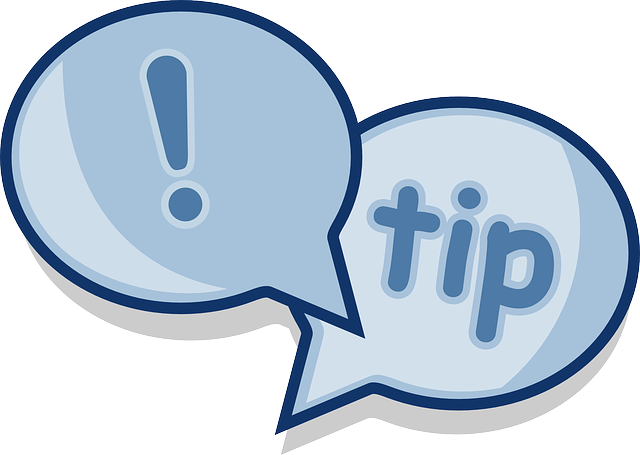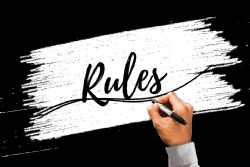Whether you're playing for fun or in a tournament, knowing how to keep accurate golf scores is essential. In this article, we'll explore some tips for keeping accurate golf scores and making sure that your scores are correct.

Some tips that may help new golfers remember their score on each hole:
- Use a scorecard:
- Most golf courses provide scorecards that you can use to keep track of your score. You can write down your score for each hole as you play.
- Keep track of strokes:
- When you hit the ball, count the number of strokes it takes you to get to the hole. If you hit the ball five times, for example, then your score for that hole is five.
I use this by picturing where I stood each time I hit a shot. For example, on a par 5:
- 1 from the Tee
- 2 from the bunker
- 3 from the right side rough
- 4 from the front of the green
- 5 for a putt that got close to the hole
- 6 sunk the putt for a score of 6 (Bogey)
- Use a scoring app:
- Many golfers use apps on their smartphones to keep track of their scores. These apps can make it easier to keep track of your score and even provide helpful statistics.
- Repeat your score:
- After you hit the ball and count your strokes, repeat your score out loud. This can help reinforce your memory and make it easier to remember your score for each hole.
- Use a mnemonic device:
- You can use a mnemonic device to help you remember your score for each hole. For example, you could associate a number with a specific object or image, such as a bird or tree.
- Focus on the hole:
- As you play each hole, try to focus on the hole and visualize your shots. This can help you remember your score for each hole and improve your overall game.
What is a memory aid device?
A mnemonic device is a memory aid or a technique that can help individuals remember information, such as names, dates, numbers, or other facts, by associating it with an easier-to-remember word, phrase, image, or pattern.
Mnemonic devices work by creating a vivid mental image that links the information to be remembered with something already familiar or easy to recall. Once, I knew someone named Leticia. Initially, her name slipped my memory during our initial encounters. However, I quickly linked it to "lettuce," envisioning a head of lettuce atop her head whenever we met. From that moment on, her name stuck in my memory without fail.
Examples of mnemonic devices include acronyms, which use the first letter of each word in a list to form a new word, such as "HOMES" to remember the Great Lakes (Huron, Ontario, Michigan, Erie, Superior), and rhymes, which use words that sound similar to create a memorable phrase, such as "i before e, except after c" to remember the spelling rule for words that contain "ie" or "ei.". Also, "ROY G. BIV" is a mnemonic device used to remember the colors of the rainbow in order: red, orange, yellow, green, blue, indigo, and violet.
Mnemonic devices can be especially useful for remembering complex or abstract information that may be difficult to recall otherwise and can be applied to a wide range of learning situations, including language learning, studying for exams, and memorizing speeches or presentations.
Here's an example of a mnemonic device that uses an acronym to remember what to do when a golfer hits 7 shots:
S.E.V.E.N.:
S - Stop: Take a moment to pause and collect yourself.
E - Evaluate: Assess the situation and determine your options.
V - Visualize: Picture the shot you want to make in your mind.
E - Execute: Swing with confidence and trust your instincts.
N - Never give up: Remember that every shot counts and stay focused.
This acronym can help golfers remember a simple process for dealing with a difficult situation on the course, such as hitting 7 shots. By breaking down the steps into easy-to-remember words, golfers can quickly recall what to do and stay on track during their rounds.
Additional Tips:

- Take your time on each shot. Be deliberate so that you remember what you did each time.
- Before you start putting, try to think of the clubs you used to get to the green.
- For example on a par 5: Driver, 3 Wood, 9 iron, pitting wedge equals 4 shots.
- Then once you are on the putting green only focus on how many putts you take. Remember to count that very close to the hole putt that your team member said you could have.
- So if it took 3 putts to get the ball in the hole your score for that par 5 is 7.
- Driver, 3 Wood, 9 iron, pitting wedge, and 3 putts
- Picture yourself where you were standing along the way with each club.
Keeping score in golf is very simple for experienced golfers. However, new golfers may have a difficult time keeping track of every shot they take.
As a beginner, I found that golf scoring was not so easy to do. No matter how many times I tried to keep track of how many shots it took me to get to the green, I would forget one or two shots I took along the way.
The Use of Score Counters

I have seen people using different types of score counters, from beads to apps on their watches.
As a beginner golfer, those can be very helpful. However, you probably do not want to depend on those gadgets and learn to recall shots. While playing with other golfers, I have seen them forget to move a bead upon finishing the shot. That can happen when they "chunk" or "whiff" their shot.
Hitting several short shots that do not go very far can be frustrating and hard to keep track of.
Golf Shots Easily Miscounted
- Multiple shots in the bunkers. If you land in the bunker it can be very tough to get out of it on the first shot, depending on how deep it is and how large of an area you have to get through to get out of it.
- Take your time and once you get out of the bunker say to yourself. "that took me 2 shots to get out." This will help you add up your shots later on.
- Going into the water is another place some players lose track of shots on. A good way to remember is this:
- 1 shot in, penalty out, 2nd shot hit well. If you go in the water again then:
- 1 shot in, penalty out, 2nd shot in, penalty out. = 4 shots so far even though you only hit the ball twice but you must count each ball that went into the water as a separate shot.
- I count it this way, 1 in, 2 out, 3 in, 4 out = 4 shots
Several golf shots are commonly miscounted, including:
Penalty strokes: Golfers often forget to add penalty strokes to their score when they hit a ball out of bounds, into a hazard, or take an unplayable lie.
Mulligans: A mulligan is a do-over shot that is not allowed in the official rules of golf. However, some casual players may allow themselves or others to take mulligans, which can lead to confusion about the number of shots taken.
Lost balls: When a ball cannot be found, it is considered a lost ball, and the golfer must take a stroke and distance penalty. If the golfer does not add this penalty to their score, they will miscount.
Provisional balls: If a golfer hits a shot that may be lost or out of bounds, they may hit a provisional ball to save time. If the first ball is found, the provisional ball is not counted, but if the first ball is lost or out of bounds, the golfer must count the stroke and distance penalty and add the provisional ball to their score.
Conceded putts: In match play, a player may concede a putt to their opponent. If the player who received the concession forgets to count the stroke, they will miscount their score.
Double-hitting the ball: If a golfer accidentally double-hits the ball during a swing, it is counted as two strokes. However, a golfer may only realize that they have double-hit the ball after the fact, which can lead to a miscount.
Misreading the scorecard: Golfers may misread the scorecard and record their score incorrectly. This can happen if the golfer is distracted or if the scorecard is not clearly laid out.
Forgetting to mark the ball: Golfers may forget to mark their ball before lifting it to clean it or to move an obstacle in its path. If they then forget to replace the ball in the correct spot, they may incur a penalty stroke and miscount their score.
Failing to hole out: Golfers must hole out on every hole, which means getting the ball into the cup. If a golfer does not do so, they must count an additional stroke. However, a golfer may forget to hole out, especially if they are in a rush or if they are playing with distractions.
Miscounting strokes on a hole: It is also possible for a golfer to simply miscount the number of strokes they took on a hole, especially if they are playing quickly or if they are distracted. This can lead to an incorrect score for the hole and the round.
In Summary:
Know the Rules of Golf Scoring
Before you start keeping score, it's essential to understand the rules of golf scoring. In golf, a player's score is determined by the number of strokes they take to complete each hole. The fewer strokes, the better the score. It's also important to understand how penalties and other factors can impact your score. Familiarize yourself with the rules of golf scoring before you begin.
Use a Scorecard
A scorecard is a simple tool that helps you keep track of your score throughout the game. Most golf courses provide scorecards, but you can also create your own. Make sure to record each player's score for each hole, along with any penalties or other factors that may affect the score. At the end of the game, double-check the scores to ensure accuracy.
Use a Golf GPS App
Golf GPS apps are becoming increasingly popular among golfers. These apps not only provide you with yardage information but also allow you to keep score digitally. Using a golf GPS app can make scorekeeping more efficient and accurate. Some popular golf GPS apps include GolfNow, Golfshot, and GolfLink.
Be Honest and Accurate
In golf, it's essential to be honest and accurate when keeping score. Golf is a sport that values integrity, and cheating can ruin the game for everyone involved. Make sure to count all strokes and penalties, and don't try to fudge the numbers to make yourself or your team look better. Accurate scores are crucial in golf, so be honest and accurate when keeping score.
Review and Verify Scores
At the end of the game, it's important to review and verify the scores to ensure accuracy. Double-check each player's score for each hole, and make sure that all penalties and other factors are recorded correctly. If there are any discrepancies, resolve them before finalizing the scores.
By following these tips, you can keep accurate golf scores and ensure that your scores are correct. Whether you're playing for fun or in a tournament, accurate scores are crucial in golf. So, make sure to know the rules, use a scorecard or golf GPS app, be honest and accurate, and verify the scores at the end of the game.
Golf is a sport that requires both physical and mental prowess, and keeping accurate scores is a crucial part of the game.




